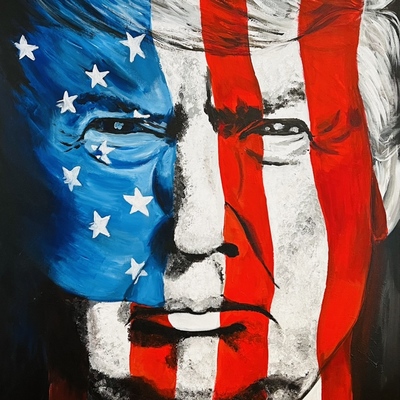Stay informed on the latest Truth Social posts from Donald Trump (@realDonaldTrump) without the doomscrolling. Consider it a public service for your mental health. (Why?)
- An Executive Order, 'Delivering Most-Favored-Nation Prescription Drug Pricing to American Patients,' was signed on May 12, 2025.
- The Executive Order aims to stop 'global freeloading' and guarantee Americans pay the same drug prices as other developed nations.
- Brand name drug prices in the United States are up to three times higher than elsewhere.
- This situation is an 'unacceptable burden on hardworking American families.'
- The Administration rejects proposals that result in 'handouts to industry.'
- Drug manufacturers must provide immediate relief from 'vastly inflated drug prices.'
- European and other developed nations are 'freeloading' off American innovation.
- Bristol Myers Squibb and all drug manufacturers are called to take specific actions within 60 days.
- MFN pricing must be extended to Medicaid for existing drugs.
- MFN pricing must be guaranteed for newly-launched drugs for Medicare, Medicaid, and commercial payers.
- Increased revenues from abroad must be returned to American patients and taxpayers.
- Direct Purchasing at MFN Pricing through DTC and/or DTB models must be provided.
- Secretary Kennedy and Administrator Oz are ready to implement these terms.
- If manufacturers refuse to comply, the Administration will deploy 'every tool' to protect American families from 'abusive drug pricing practices.'
- Americans are demanding lower drug prices.
- Binding commitments are expected by September 29, 2025.
The post is a direct directive from the White House to the pharmaceutical industry, specifically mentioning Bristol Myers Squibb, demanding substantial changes to drug pricing models. Such policy changes, if implemented, could significantly impact the revenue streams and profitability of pharmaceutical companies, which are major components of the S&P 500. The implied threat of using 'every tool' if compliance is not met adds to the potential for market disruption and uncertainty within the healthcare sector.
The post concerns U.S. domestic drug pricing and trade policy, asserting other nations are 'freeloading' on U.S. innovation. While it touches on international trade practices, it does not contain threats of military action, ultimatums that would lead to armed conflict, or references to international security crises, thus posing no direct risk of international conflict escalation.
- Commodities: Gold (XAU) might see a slight, temporary increase if overall market uncertainty rises, acting as a minor safe-haven. No direct impact on Oil (WTI) or other industrial metals. Short-Term Watchlist: XAU/USD price action due to general market sentiment. Medium-Term Focus: Indirectly related to inflation trends if policy affects broader economic activity.
- Currencies (Forex): The US Dollar Index (DXY) may experience minor fluctuations based on perceived U.S. economic policy strength or weakness related to trade practices. No significant direct impact on major currency pairs. Short-Term Watchlist: Minor reactions in USD pairs based on overall risk appetite. Medium-Term Focus: Global growth differentials and trade balances could be indirectly affected if policy shifts significantly.
- Global Equities: High impact on the healthcare and pharmaceutical sectors within the S&P 500, Nasdaq, and potentially global indices like STOXX 600 or Nikkei 225 for companies with U.S. market exposure. This could lead to sector rotation out of pharmaceutical stocks. Short-Term Watchlist: Futures open for healthcare sector, VIX might tick up slightly due to industry-specific uncertainty, performance of pharmaceutical/biotech ETFs (e.g., XLV, XBI). Medium-Term Focus: Earnings revisions for pharmaceutical companies, potential shifts in global capital flows into or out of the healthcare sector.
- Fixed Income (Bonds): U.S. Treasury yields (10Y, 2Y) are unlikely to be significantly affected directly. A flight to safety could occur if the policy creates broader market distress, but this is less probable. Credit spreads for pharmaceutical companies, especially those heavily reliant on U.S. sales, could widen due to potential revenue impacts. Short-Term Watchlist: Credit ETF flows for the pharmaceutical sector. Medium-Term Focus: Indirectly related to broader fiscal concerns if industry revenue declines impact tax receipts.
- Volatility / Derivatives: The VIX could see a slight spike due to increased uncertainty in the healthcare sector. Options positioning in individual pharmaceutical companies and sector-specific ETFs may reflect increased hedging or speculative activity. Short-Term Watchlist: VIX levels, implied volatility for major pharmaceutical stocks. Medium-Term Focus: Volatility regime shifts within specific industry sectors due to policy uncertainty.
- Crypto / Digital Assets: Very limited direct impact on Bitcoin (BTC) or other digital assets. Any movement would likely be an indirect correlation with broader equity market sentiment if significant negative market reactions occur, treating BTC as a risk-on asset. Short-Term Watchlist: BTC/USD correlation with major equity indices. Medium-Term Focus: Macro liquidity backdrop and broader risk appetite.
- Cross-Asset Correlations and Systemic Risk: Unlikely to cause systemic risk or break normal cross-asset correlations, as the impact is primarily sector-specific rather than a broad economic or financial stability threat. Short-Term Watchlist: Performance of junk bond ETFs (e.g., HYG) if pharmaceutical bond ratings are affected. Medium-Term Focus: Potential for increased regulatory scrutiny on industry practices.
- Retail Sentiment / Market Psychology: Unlikely to trigger widespread retail speculation in 'meme stocks' or highly volatile altcoins. The post is a high-level policy directive targeting established corporations rather than a social media trend. Short-Term Watchlist: Social media trends related to pharmaceutical stocks, but not expected to be a major retail market driver. Medium-Term Focus: Potential for increased public discourse around drug pricing and healthcare reform, but limited direct market psychology impact from this specific post.

